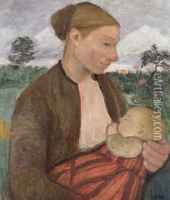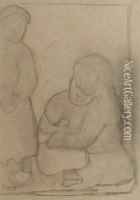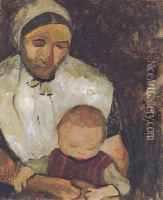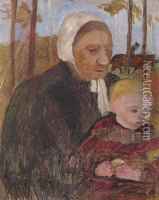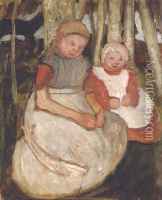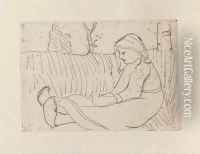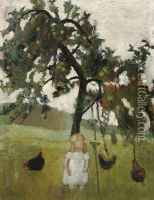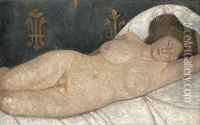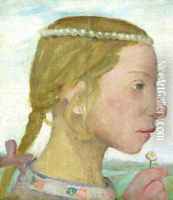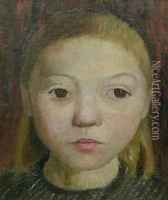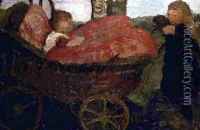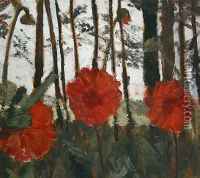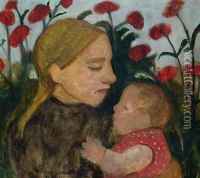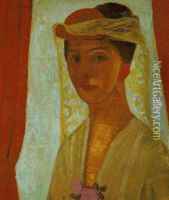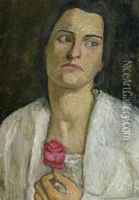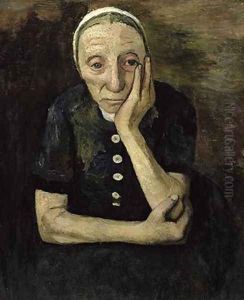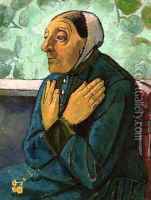Paula Modersohn-Becker Paintings
Paula Modersohn-Becker was a German painter and one of the most important representatives of early expressionism. Her work predated the expressionist movement but later became recognized for its innovative qualities and its intensity of feeling and boldness of form. She was born on February 8, 1876, in Dresden-Friedrichstadt, Germany, and grew up in a culturally inclined middle-class family.
Modersohn-Becker began her formal art education in 1893 at the Society of Berlin Artists. Later, she continued her studies at the traditional artist's colony at Worpswede, where she met fellow artists like Fritz Mackensen and Heinrich Vogeler, as well as her future husband, Otto Modersohn. In Worpswede, she developed her initial style, which incorporated elements of the landscape and a certain simplicity and directness in portraying her subjects.
However, it was during her stays in Paris between 1900 and 1907 that her work underwent significant transformation. She was deeply influenced by the modern art movements of the time, particularly by Post-Impressionism, as well as by the work of Cézanne, Gauguin, and the primitive art she saw at the ethnographic museum in Paris. These influences led to a more radical approach to form and color in her work. She began to experiment with the simplification of shapes and the use of bold, flat colors, often outlining her figures, which gave her paintings a distinctive, expressive quality.
Despite her brief career, Paula Modersohn-Becker was very prolific. She produced more than 700 paintings and 1,000 drawings, which included self-portraits, landscapes, and still lifes. Her portraits often depicted women, children, and the elderly, rendered with empathy and a penetrating psychological depth. One of her most famous works is 'Self-Portrait with Two Flowers in Her Upped Hair,' painted in 1907.
Tragically, Modersohn-Becker's life and career were cut short when she died from an embolism at the age of 31, shortly after giving birth to her daughter, Mathilde. Her legacy, however, has grown over time, and she is now celebrated as a pioneering figure in modern art, particularly for her role in advancing the representation of women in art. Her bold and innovative style paved the way for future expressionists and contributed significantly to the development of 20th-century art.
